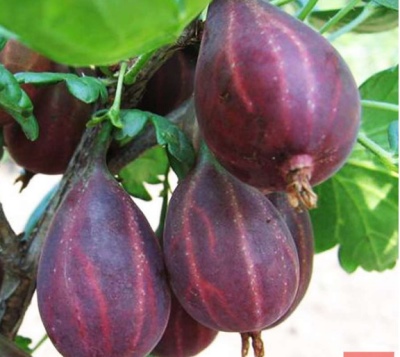
- Authors: K. D. Sergeeva, T. S. Zvyagina (All-Russian Research Institute of Horticulture named after I. V. Michurin)
- Appeared when crossing: Captivator 0-271 x Besshipless 3
- Name synonyms: Ribes uva-crispa Serenada
- Year of approval: 2004
- Growth type: vigorous
- Description of the bush: slightly spreading, crown of medium density
- Escapes: growing - medium, straight, light green, hairless; lignified - medium thickness, light
- Thorniness: very weak
- Thorns: single, short and medium, straight, light, matte
- Sheet: large, green, matte, not pubescent, slightly wrinkled, of medium density, straight or slightly concave, three to five lobed
Growing every variety of plants is a serious challenge even for experienced gardeners and gardeners. However, complete information can significantly simplify the task. And, having mastered it, you can successfully grow the Serenade gooseberry.
Breeding history
The gooseberry Serenade was created at the Michurin Research Institute of Horticulture. This project was supervised by the breeders Sergeeva and Zvyagin. To obtain a hybrid, biological material Beshipnoy 3 and Kaptivator 0-271 were used. The official synonym for this culture is Ribes uva-crispa Serenada. The shrub has been allowed to grow in private gardens and dachas since 2004.
Description of the variety
Serenade bushes can grow up to 1-1.5 m. They are not very sprawling. There are thorns, but there are very few of them. The growing shoots develop straight and are colored in a light green tone. Pubescence is uncharacteristic for them. Large green leaves have a matte sheen.
No fluff appears on the leaves. They have little wrinkling. The leaf can have 3 or 5 blades. Single spines are short. Other features:
- perpendicular orientation of thorns in relation to the shoot;
- placement of thorns strictly in the lower part;
- moderately large pale flowers;
- inflorescences contain 1 or 2 flowers.
Characteristics of berries
Serenade produces medium to large fruits. Their mass can be from 4 to 6.1 g. In shape, the berries are similar to a pear or resemble an elongated cone. They are colored dark red. Other nuances:
- slight waxy coating;
- pink veins;
- a small amount of seeds.
Taste qualities
The flesh of Serenade is dense. It is characterized by excellent juiciness. This variety has a sweet and sour taste. Since seeds are few in number, they do not have a significant effect on the palate. The share of sugars in total is 10.1%, the level of titratable acidity is 2.3%, and the tasting committee gave the fruits 4 points.
Ripening and fruiting
This gooseberry has a late ripening period. Harvesting usually occurs in August. It should be borne in mind that meteorological conditions and agrotechnical measures can greatly affect the achieved result.
Yield
The collection of berries per 1 bush is 3.6 kg. With plantation cultivation, Serenades can be obtained up to 12,000 kg per 1 hectare. Much depends on the actual weather conditions and the ability to grow. Remarkably, the harvested crop is transportable.
Growing regions
The variety is zoned in the Central Black Earth District. You can try to grow it in more southern areas. Resistance to drought and cold weather makes it possible to use the culture in relatively northern areas. But in this case, gardeners should understand that the risk is quite high.
Landing
For the variety, it is necessary to choose the looser soil as possible. Permeability to air and water should be maximized.There is a choice between neutral or weak acidity. The culture develops well both in the sun and in partial shade.

Growing and care
The Serenade variety is winter-hardy. This plant is also very drought tolerant. Water the gooseberries in moderation. The need for pest control is minimal. At the same time, the highest sensitivity to American powdery mildew.
As winter approaches, it is necessary to water the bushes abundantly and lay out fresh mulch. Serenade must be protected from the viral mosaic. The bush is rejuvenated at the age of 9 or 10 years. Sanitary thinning of the crown is carried out starting from 3-4 years of age. Regular loosening of the soil is strictly necessary.




In order for the gooseberry to produce a good harvest, it is necessary to devote time to disease prevention.

Review overview
Gardeners note that it is not difficult to care for such a crop. Its appeal is largely due to the small number of thorns. The berries are distinguished by good commercial characteristics and are sold excellently. Pruning bushes is easy. It is worth considering that such a gooseberry takes root perfectly in various territories.



































































